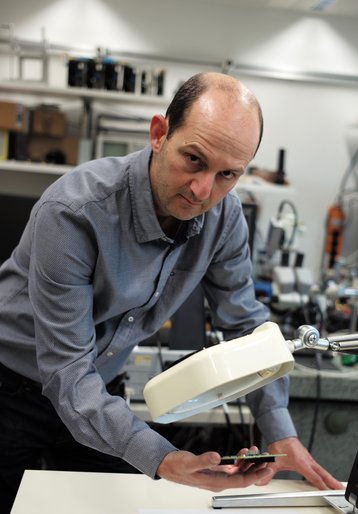A team of scientists at IBM Research has achieved a breakthrough that could speed up the development of Phase Change Memory (PCM) – a new type of persistent computer memory that promises to be faster than flash, but keep the data when the machine is shut down.
The team, led by Dr. Haris Pozidis, has managed to store three bits of data per memory cell, effectively tripling the capacity of current generation PCM chips.
“Phase change memory is the first instantiation of a universal memory with properties of both DRAM and flash, thus answering one of the grand challenges of our industry,” said Pozidis, manager of non-volatile memory research at IBM Research lab in Zurich.
“Reaching 3 bits per cell is a significant milestone because at this density the cost of PCM will be significantly less than DRAM and closer to flash.”
The findings were presented at the IEEE International Memory Workshop in Paris.
RAM Jam
PCM cells consist of two electrodes on either side of a tiny piece of chalcogenide glass. By applying heat, such glass can be switched easily between an amorphous (low conductivity) and a crystalline (high conductivity) state, changing its optical and electrical properties to record data.
PCM chips last much longer than flash – between 10 and 100 million write cycles. They are also resistant to radiation, unlike flash, which is unsuitable for many space and military applications.
PCM has the potential to revolutionize in-memory computing, but it can also be used for high-performance storage, able to deliver speeds that beat current generation flash by several orders of magnitude. However, the technology currently does not meet the density and cost requirements for enterprise applications - and that’s exactly the problem IBM is trying to solve.
IBM Research previously demonstrated the ability to store a single bit per PCM cell. This week, scientists were able to demonstrate a system that stores three bits per cell in a 64k-cell array at elevated temperatures and after 1 million endurance cycles.
To achieve multi-bit storage, IBM Research developed two innovative enabling technologies: a set of drift-immune cell-state metrics and drift-tolerant coding and detection schemes. The term ‘drift’ refers to the changes in stability of the cell’s electrical conductivity over time, exacerbated by changes in ambient temperature.
Other technology vendors developing PCM include Intel, Micron and Samsung. Meanwhile HGST and networking specialist Mellanox are already collaborating on a networking architecture that could keep up with the performance of this new type of memory.
But PCM is by no means the only type of persistent memory coming to the market in the next few years – its competitors include Resistive RAM (ReRAM), Racetrack Memory and 3D Xpoint, and even more exotic variants like Magnetic RAM (MRAM), Spin-transfer Torque RAM (STT-RAM) and Ferroelectric RAM (FeRAM).

